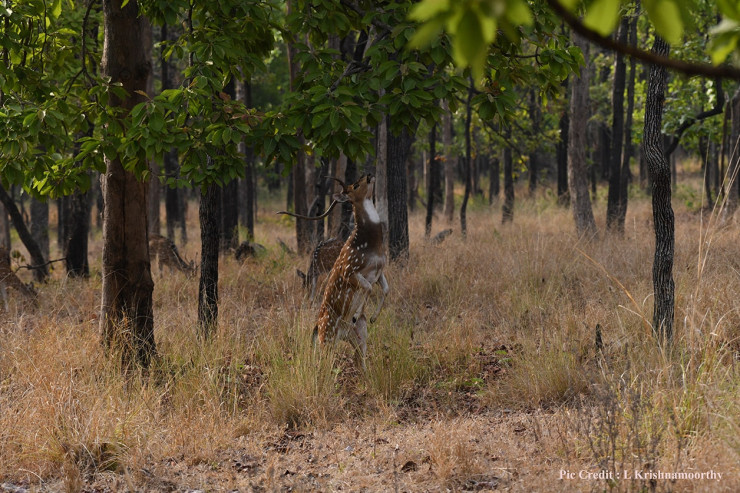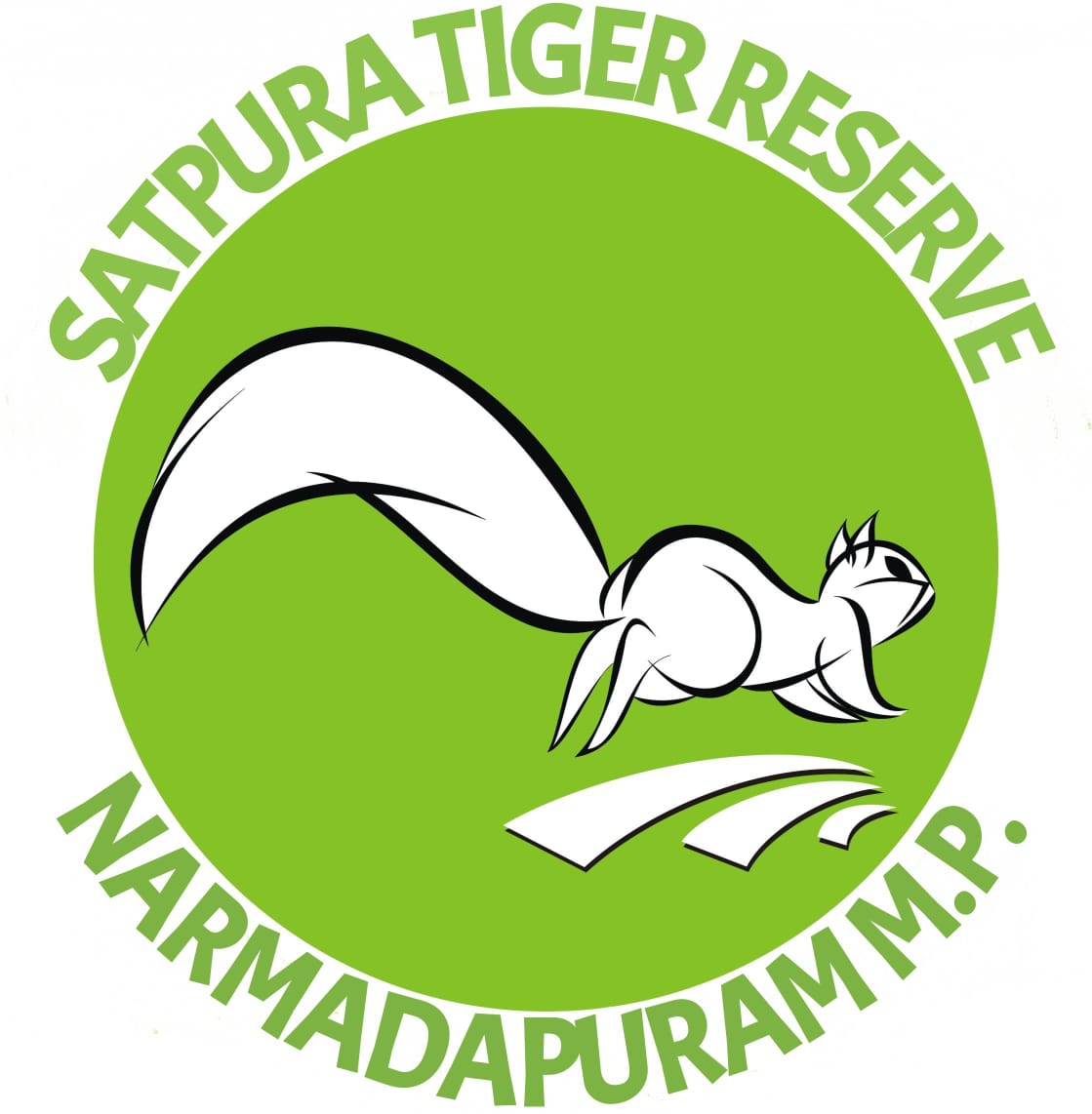
The vegetation composition, canopy density and layers, including the varied grasslands together with topography and distribution of water create varied habitats. These are dry grasslands at higher altitudes like Neemghan as well as moist grasslands in the valleys along the draw down areas of the Tawa reservoir; river courses with sandy banks, sand spits and grassy patches; water holes; the Tawa reservoir; rocky outcrops with grasses or scrub; cliffs and talus; village environs; lantana infested areas and plantations.
There are two significant geological formations in the area. Roughly, south of the higher hills below the Pachmarhi plateau there are basaltic formations that support teak and mixed forests while north-eastwards the basalt has a sandstone cap with some magnificent cliffs. This formation supports mixed forests of different tree associates and teak is replaced by Sal. The standing dead and dying trees, the features associated with them, the large woody debris on the ground provide the diverse and critical microhabitats for animals and plants.
The area is endowed with rich floral diversity and inventory is not exhaustive. A lot of research and studies have been conducted in Bryophytes and Pteridophytes. The under story in the Bori reserve is represented by the finest quality bamboo in central India. Thus it will be seen that habitat structure and canopy density are varied, and range from the early to the late succession stages. The forest composition and structure of tree stands have thus influenced the occurrence and distribution of other vegetation communities and species, the quality of habitats and consequently the distribution and abundance of wild animals.
The riparian system in the area has a dendritic pattern that connects all kinds of habitats across elevation gradients. Thus they form the most important corridors for movement and dispersal of propegules of several species of plants, and the movement and dispersal of wild animals. Though ideal but it is not essential to have continuous riparian vegetation throughout for the purpose.
• The moist miscellaneous forests occur on higher altitude is characterised by Mangifera indica, Syzygium Cuminii, Terminalia Chebula and Ficus spp.
• Mixed forest with Terminalia tomentosa and Annogeissus latifolia occurs on gentler slopes along foot hills
• Low quality mixed forest occur where underlying rock is sandstone and carries high percentage of Chloroxylon swietenia, Lagerstroemia parviflora, and Lannea grandis.
• Good quality teak forest having a high percentage of teak with dense under story of Bamboo, occurs where soil is derived from trap.
• Low quality teak forest grows on similar soils on much drier sites and are characterised by the undergrowth of lantana and Hyptis sp.
• Teak community with tall and well-formed stems occurs on alluvium soil along river banks.
• Dry peninsular Sal community, which spreads over an area about 140 sq.km. on Pachmarhi plateau, this is the western limit of distribution of species and appears to be the highest limit of dry Sal and gives appearance of an island of Sal surrounded by Teak and miscellaneous species.
 Twitter
Twitter


